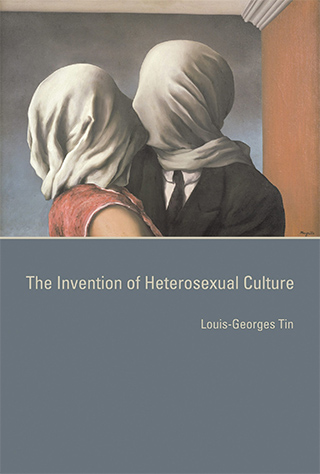The Invention of Heterosexual Culture

Heterosexuality is celebrated in film and television, in pop songs and opera, in literature and on greeting cards. Simultaneously, it is taken for granted, so deeply embedded in our culture that it often goes unquestioned. And yet, as Louis-Georges Tin shows in his book “The Invention of Heterosexual Culture” (excerpted below), heterosexuality as a dominant cultural force is a relatively recent development. In premodern Europe, Tin explains, heterosexuality was perceived as an alternative culture, and although the practice was standard, the symbolic primacy of the heterosexual couple was not. He maps the emergence of heterosexual culture in Western Europe and highlights the significant resistance it faced from feudal lords, church fathers, and even the medical profession. While heterosexual procreation is a biological necessity, Tin argues that heterosexual culture is merely one of many social constructs and should not be regarded as a universal model. As such, there is “a need to explore as never before when, how, and why our society began to celebrate the heterosexual couple.”
–The Editors
Paradoxically, the blossoming of gay and lesbian cultures suggests that it is now possible to review heterosexuality in a fresh light. Over the centuries, thousands of studies have explored issues of heterosexual love, sex, marriage, and the family, whereas heterosexuality itself rarely rates a mention. It is usually taken for granted as a self-evident point of departure — a viewpoint that is also a blind spot. Heterosexuality is assumed to be ever-present as a matter of course and has escaped analysis, as if it is transparent to itself. This absence of analysis is itself a striking if seldom acknowledged fact.

That said, the world at large appears obsessed by the imagery of the heterosexual couple. Fairy tales, novels, cinema and television, newspapers and magazines, advertising and pop music: All celebrate the pairing of man and woman. For most heterosexuals, at least, it is an invisible kingdom where heterosexuality reigns supreme and where everything in nature is in its place and hence natural. On this topic, the most basic — as well as the most radical — questions have not been resolved or even asked. Notably, in the first instance, is the question of causes. Why are certain individuals drawn primarily to members of the opposite sex? The question may seem absurd or even unnecessarily provocative, but it raises a point that is far from obvious to the extent that the root cause of this phenomenon remains largely unexplored.
Although, in general, heterosexuality may seem to be the most natural thing in the world, it is far from easy to justify it on purely biological terms. Few people ever ask themselves whether attraction to the opposite sex is triggered by a physiological mechanism. The question commonly asked by biologists and doctors — and, for that matter, by society as a whole — is what causes people to be drawn to persons of the same sex. Current research has been largely directed toward otherness and the heuristically abnormal. Homosexuality rather than heterosexuality has been explored and explained.
The facile justification for heterosexuality is that it is essential for the reproduction of the species. This explanation puts the end before the means in that no specific cause is identified (hormonal, neuronal, psychological?). Accordingly, heterosexuality has its origins in genetic necessity, or if that statement seems unduly laconic, it can be reformulated in more Darwinian terms: Heterosexual behavior, irrespective of the factors underpinning it, represents the sole means of ensuring human reproduction and therefore is conducive to natural selection and the evolution of the species.
It is apparent that Greek society and others like it were heterosexual only with respect to biological procreation.
But this explanation is far from satisfactory. Above all, it fails to pinpoint the principle that underlies heterosexual behavior. Can it be sourced to the brain, the genes, the hormones, or somewhere else? Even supposing that one acknowledges the heterosexual imperative that is implicit in biological reproduction, it is more difficult to account for the essentially heterosexual structure of human society. After copulation, there is no apparent need for a couple to continue together, and most mammals part company rapidly thereafter. Even in the case of primates that often coexist in social groups, there is scant justification for concluding that some form of heterosexuality is fundamental to their social structure.
Certainly, biological reproduction is heterosexual, but social structures are much more complex, based as they are on strictly observed patterns of dominance, rivalry, cooperation, and interaction. The heterosexual couple is seldom the basic component cell of the group and, in many instances, is not even necessary for the education of the young. It is clear that heterosexuality is not a dominant feature of animal societies. Some form of instinct is doubtlessly at work between the opposite sexes during ovulation, and this behavior is heterosexual. But in reality, to be precise, only humans have built societies on the basis of heterosexuality.
All human societies are not heterosexual. One need look no further than archaic or classical Greece as a famous but by no means isolated example among Indo-Europeans in general. It is apparent that Greek society and others like it were heterosexual only with respect to biological procreation. This should not be taken to imply that Greek society was homosexual, inasmuch as pederastic initiation was a practice quite distinct from what we now mean by homosexuality. As recent studies have demonstrated, however, the question of homosexual versus heterosexual orientation is scarcely relevant. Although the Greek male typically sought a female to ensure continuation of the family line, it is evident that heterosexuality itself was not the basis on which ancient Greek society was constructed.
To substantiate this argument, a comparison can be established with food. In all human societies, there are food-related practices, and they are indispensable to the survival of individuals. But all societies do not necessarily construct a culture of gastronomy as, for example, in France. The art of the table, of wine, and of cheeses, the rituals, the service, the conviviality, the cookbooks, the restaurant guides, the systems of classification and stars, the televised cooking shows are some of the elements that define French gastronomy. Other societies have developed food practices that are less diverse and less ritualized, and they are based primarily on the material necessities for survival. Granted, those attitudes are reflected in principles and codes, and they sometimes specify celebrations when food occupies a particular place. But they do not add up to what can truly be called a culture of gastronomy. In these numerous contexts and not only in ancient or far-flung societies like those of the Amazon or New Guinea, food is at the same time both necessary and secondary, and, nevertheless, it is not elevated to the rank of sacred and collective ritual. In short, eating is universal, whereas gastronomy is not.
At the same time, heterosexual practices are universal, whereas the culture of heterosexuality is not. Although human nature is manifestly heterosexual, which allows the reproduction of the species, human cultures are not necessarily heterosexual — that is, they do not always give symbolic primacy to the man-woman couple and to love in its cultural, literary, or artistic representations, as close study of ancient and archaic civilizations reveals.
Going further, we could ask whether heterosexual cultures — that is, those where attraction to the opposite sex predominates and is cultivated, and celebrated — are no more than a specific case that historical reasons related to economic expansion and colonization have apparently rendered general. Indeed, in many cultures where heterosexual practices are the norm, they are seldom associated with love and even less with passion. They derive from a sense of social obligation that regulates sexual relations (more often than not with the male as the dominant partner) so that male desire for a female is simultaneously regarded as necessary yet secondary. This goes some way toward explaining why such cultures have little place for love. The importance assigned to love — or more exactly, to heterosexual love — seems to be a peculiarity of Western societies, as American historian John Boswell has pointed out:
Industrial society has made a veritable obsession of this subject. To an observer of the modern West’s cultural monuments, it would probably seem that romantic love was the primary interest of industrial society in the nineteenth and twentieth centuries. An overwhelming proportion of popular literature, popular art, and popular music have as their central focus the seeking out, celebration of, or lament over romantic love, which is surprising and noteworthy considering that the vast majority of the population to which these cultural messages are directed is either already married or too young or old to be involved in such pursuits. Those immersed in this “sea of love” tend to take it for granted; even many scholars of the subject fail to notice how remarkable is the degree of its prominence in the cultures in which they grew up. Very few premodern or nonindustrialized contemporary cultures would agree with the contention — uncontroversial in the West — that “the purpose of a man is to love a woman, and the purpose of a woman is to love a man.” Most human beings in most times and places would find this a very meager measure of human value.
In other cultures and in premodern Western societies, other subjects have formed the primary material of public culture: celebration of heroic figures or events; reflections on the seasons; observations on the success, failure, or precariousness of agricultural cycles; histories of families (in which romantic love plays a small role, if any); explorations or elaborations of religious or political traditions.
Although heterosexual procreation is the biological basis for human society, heterosexual culture is only one construct among many, and in this sense, it should not be presented as a unique or universal model. What this implies is a need to explore as never before when, how, and why our society began to celebrate the heterosexual couple. What is needed is an exploration of the origins of the sociosexual context in which we live today, a subject that has never been studied in these terms. But to accomplish this requires nothing less than an epistemological revolution, which means taking heterosexuality out of the “order of nature” and putting it within the “order of time” — that is, history.
Louis-Georges Tin, born in Martinique and now living in Paris, lectures in the arts faculty at the University of Orléans. He is the editor of The Dictionary of Homophobia, the founder of the Paris-based IDAHO Committee, which coordinates International Day against Homophobia and Transphobia, and the author of “The Invention of Heterosexual Culture,” from which this article is excerpted.



